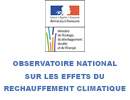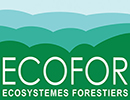Adaptation of Alpine areas to droughts outbreak in a context of global change
Adaptation of Alpine areas to droughts outbreak in a context of global change
The purpose of this project was to analyze the adaptation capacities of semi-natural mountain areas against climate change, especially droughts recurrence.
Our specific goals were:
– Improving the understanding of resiliency and transformation mechanisms of ecosystems and also of adaptation process of agricultural and forest actors
– Proposing guidelines for stakeholders of these areas through public agro-environmental and territorial development policies, and
– Proposing long term monitoring strategies supporting adaptation of actors.
Little data are available to evaluate ecological dynamics on a long-term basis. The analysis of available data for pasture lands through forest inventories suggested a strong resiliency to droughts during the last 30 years. We perceive however answers to forest regeneration announcing an erosion of the lower limits of species such as beech and fir and a general deficit of regeneration of spruce on the most superficial grounds.These patterns are confirmed by the experimental approaches. For the forest, these have showed that if mortality cannot be directly related to droughts on the productive stations, regeneration is sensitive to water competition with both grass and canopy, especially between leafy and resinous. The strong pasture lands resiliency, whose dynamics and functioning are mostly guided by management, results from physiological adaptation capacities in these naturally variable environments.
However, in the Vercors area case, a temporary pronounced answer during the extreme drought year (canopy thinning, decrease of more mesophilic species) displays what was experienced by livestock farmers and shepherds. Observation data as wells as experimentations don’t allow to rule out more severe long-term effects, including threshold effects and feedback processes through the grounds.
Surveys conducted among agricultural and forest actors, in order to analyze their adaptation capacities and mechanisms to recent droughts, showed that droughts consequences on forest and livestock farming activities are by nature different depending on management time scales and their economic functioning. Adptation measeures adopted by livestock farmers remain limited to an adaptation of practices playing on systems flexibility (pasture lands, mowing fields) without any structural changes. Concerns of livestock farmers and foresters meet on droughts mid-term impact and focus on the interactions between increase of drought outbreaks and socio-economic context. They also share their uncertainties on long-term dynamics (possible threshold effects) and on the consequences of practices changes for their resources durability, both forest and fodder ones.
Finally, droughts increase is likely to decompartmentalize the two groups of actors, both by the need of wooded “buffer” areas for the pasture and for pasturelands colonization by Pinus uncinata.
Participative building of scenarios combining climate and socio-economic methods allowed to highlight the relatif role of these two dimensions in the actors’ adaptation. According to what observed about perception and adaptation to recent droughts, reality of change is more important for the livestock farmers than for the foresters, were it only in relation with the time scales of their decisions and the detectability of recent events effects.
Generally speaking, adaptation proposals are in the continuity with either recent answers or the anticipations they have generated. The possible more radical changes challenge the attitude against risks and always integrate other factors, especially concerning the socio-economic context, even though this one remains a major uncertainty, in particular in the “wait-and-see” position of forest actors.
Finally, even though the regulatory context remains a major factor of uncertainty, il will be the key factor in the actors’ capability to implement adaptations, as much as technical and territory support.
The implementation of a monitoring system adapted to the constrains of mountain areas seems to be not only a scientific challenge but also an answer to the actors’ request of sustaining their adaptations.
Analysis of existing networks and protocols highlights a multitude of networks, tools and protocols on multiples scales. Following the example of “Alpages Sentinelles” network, such a monitoring will have to ensure the coordination and communication among networks – and especially among scientists and stakeholders – and among protocols in order to combine parameters about climate, ecosystems (biodiversity and production value) and practices.
Sharing of this approach between natural areas managers, farmers, foresters, scientists and stakeholders is crucial to both its implementation and durability as well as to support the adaptation.
| Coordinators |
Sandra Lavorel (CNRS) |
| Partnership |
Centre Européen de Recherche et Formation Avancée en Calcul Scientifique LECA
CNRS-Université J. Fourier,
Cemagref UR Ecosystèmes Montagnards (EM),
Cemagref UR Développement des Territoires de Montagne (DTM),
Parc National des Ecrins. |
| Funding |
MEEDDM
|
| Budget |
213 225 € TTC
|





